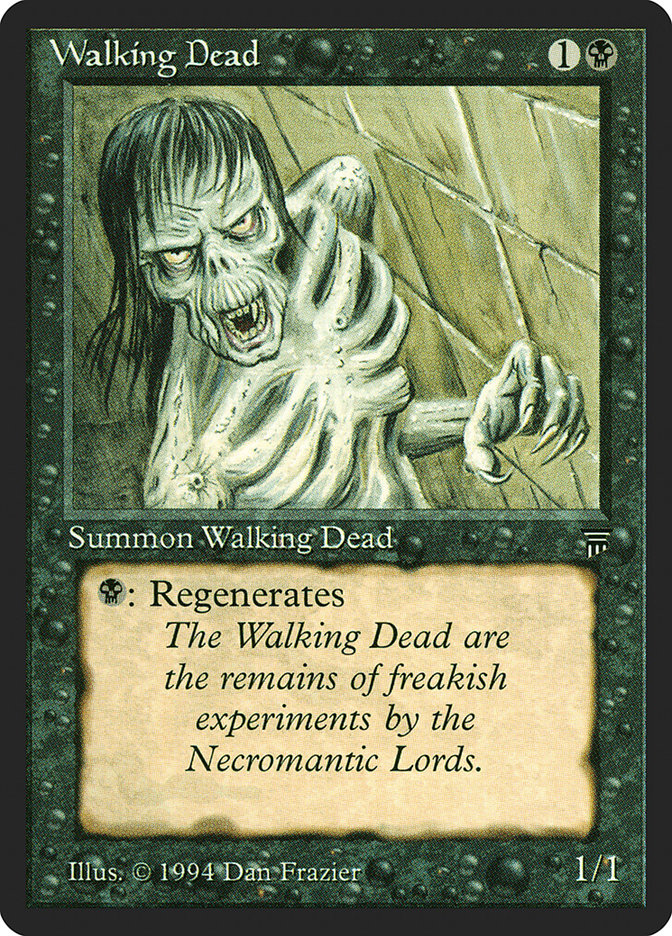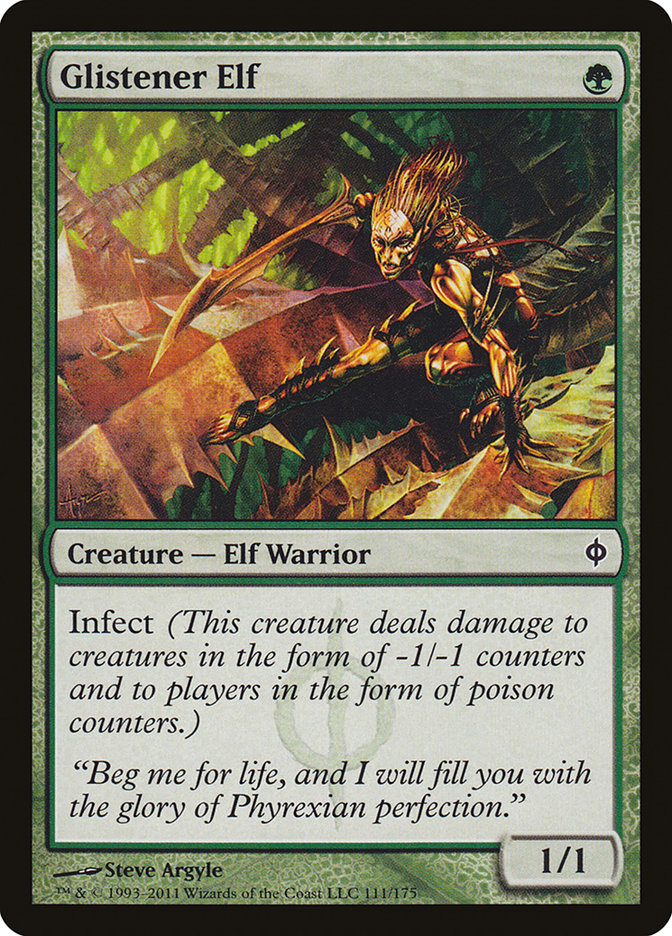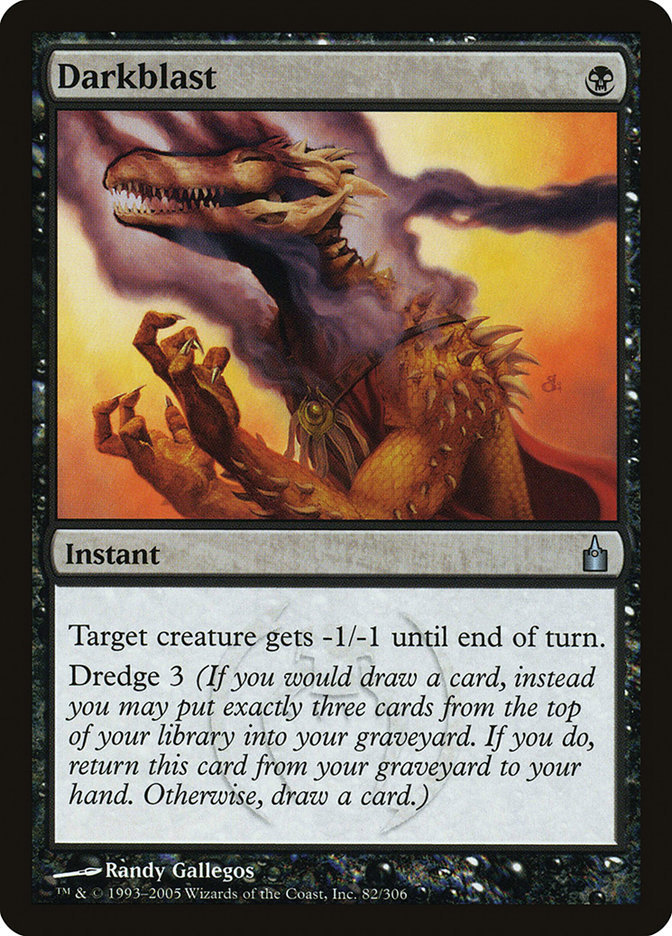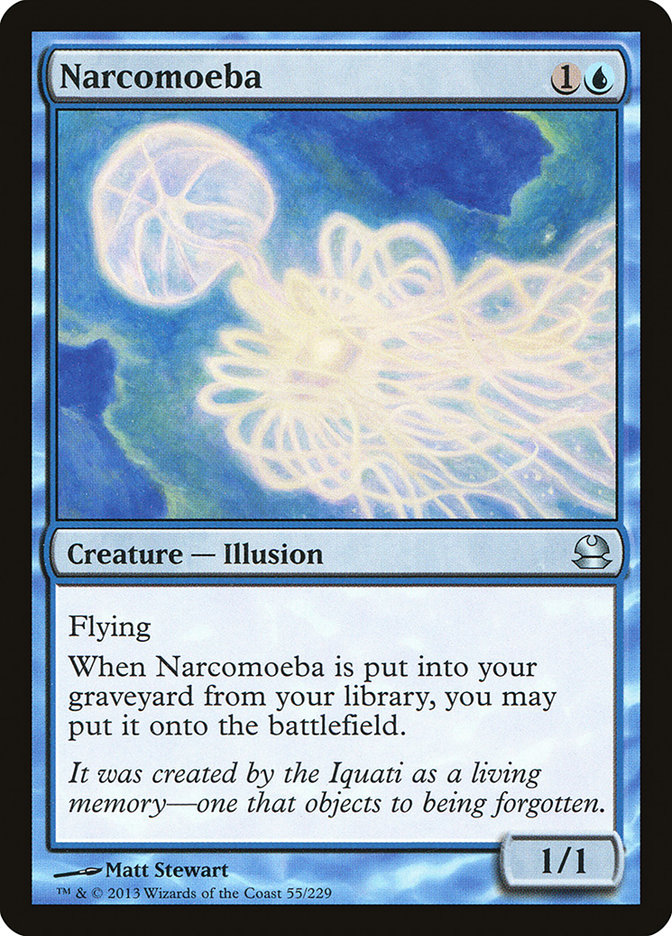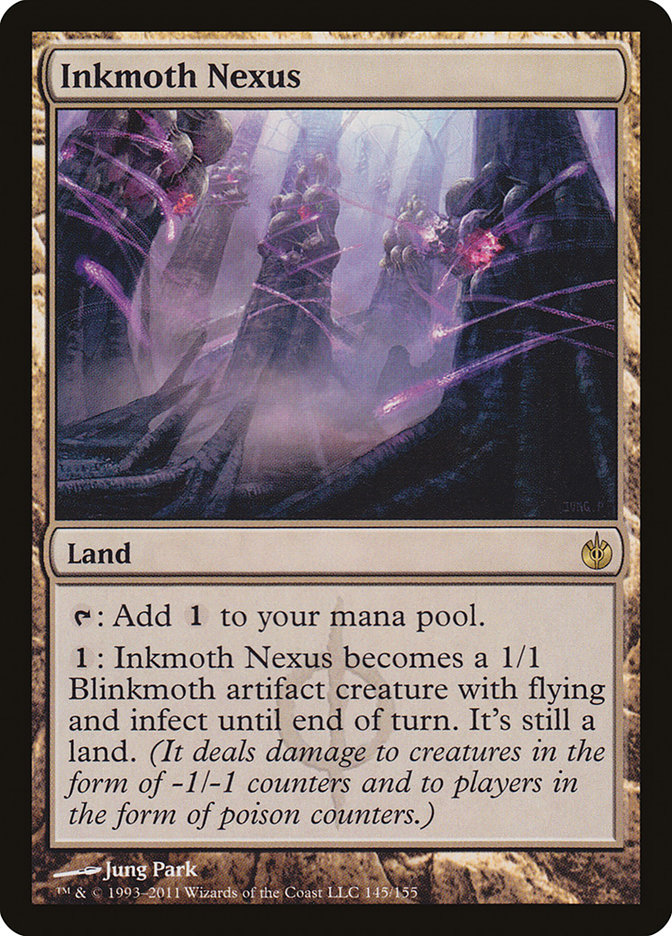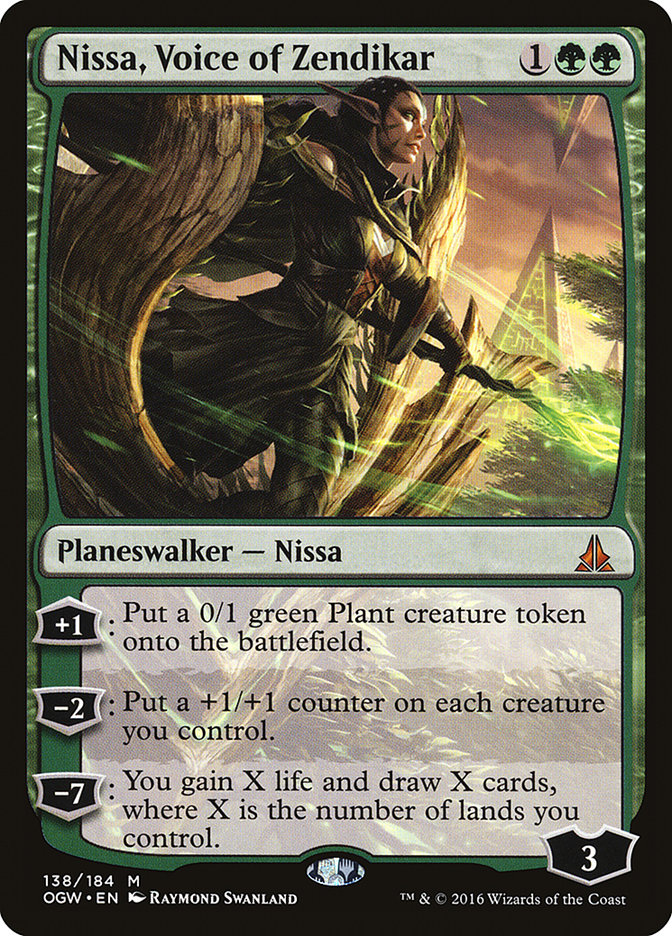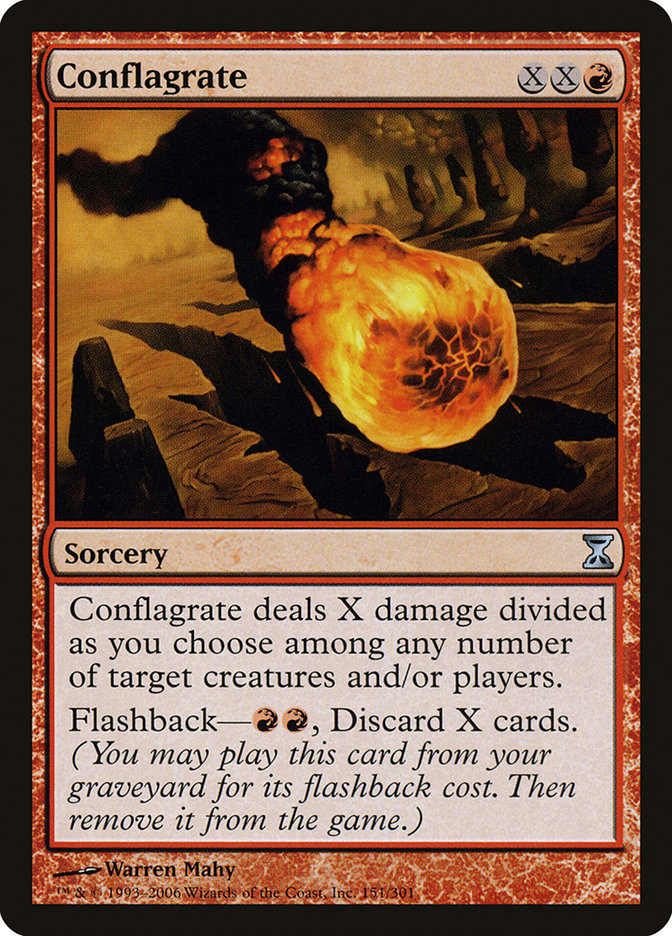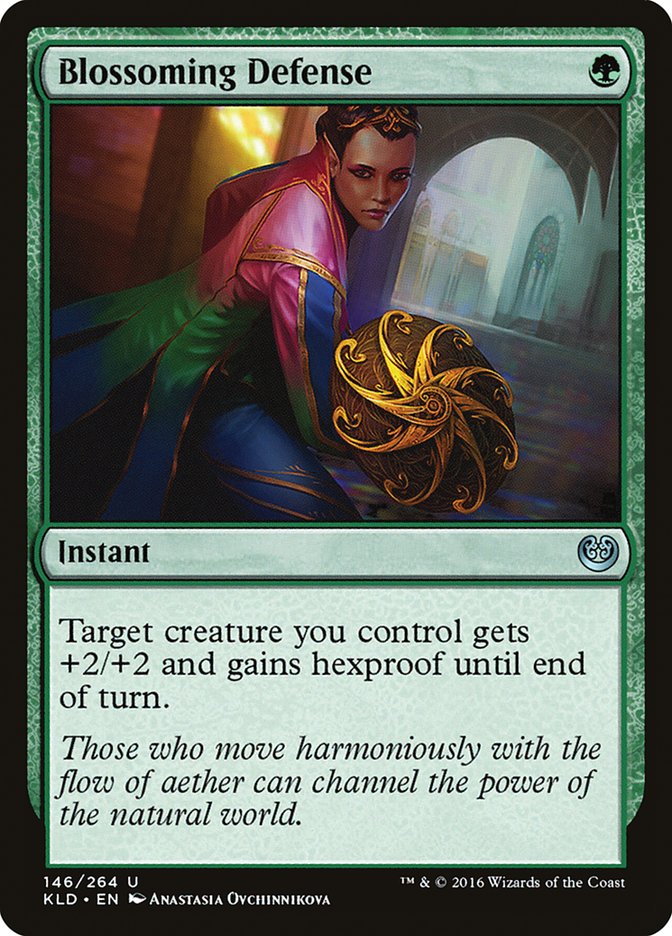[Copy Editor’s Note: Emma wrote this article before her feature match went up on YouTube! Check out the YouTube video immediately below and Twitch video throughout the rest of the article.]
Television shows are wonderful. Different people watch their own shows for their own reasons, but at the end of the day, it’s nice to get a bit of time to escape from real life for a bit and watch other people do whatever it is they do. Some people like The Walking Dead because it’s fun to watch a Zombie apocalypse without the “horror” aspect that comes from a movie. Others prefer slice-of-life comedies and sitcoms in the vein of Modern Family or The Office.
I’m boring. I didn’t watch much TV when I was younger. When I get home, the show I tend to follow is “Whatever Events Had Video Coverage Last Previous Weekend.” I’m the bozo that gets home from a Magic tournament and is champing at the bit for even more Magic.
Similar to watching any character-driven TV show, there tend to be a lot of scenarios in which I and many viewers like me tend to think, “What on Earth was that person thinking?” It isn’t always a bad thing. Sometimes it’s difficult to comprehend how somebody made a line of unorthodox decisions to sculpt a game in which they could win; in other instances it can be a person who made a catastrophic series of plays that threw away a nearly unlosable game.
Last weekend at #SCGMKE I had a feature match on-camera against the lovely Erin Campbell. After the round I opened my phone to a waterfall of questions about different lines of play that I took during the match and thought it worth discussing the thoughts I had that led to the plays I made in-game.
For context’s sake, here’s the deck that I played last weekend:
Creatures (12)
Lands (20)
Spells (28)

As of writing this article, the video replays weren’t yet on the StarCityGames.com YouTube page, so I’ll be using Twitch footage from the first day of the StarCityGames.com Open in Milwaukee.
The only match I’m going to focus on is the one in which I was piloting Infect against Erin Campbell’s Dredge deck during Round 4. To watch the matchup in its entirety, start the timer at 3:35:43 and go from there.
For discussions on the video, I’ll be linking to a specific timestamp and discussing what goes on during that turn. I won’t be breaking down turns that are relatively obvious (such as playing two copies of Glistener Elf on turn 2 with no other castable spells at 3:39:21); the coverage team for The SCG Tour does a great job at calling the match and I’m not going to encroach.
03:38:18 – Most of this turn is relatively elementary, but I prefer leading on the Noble Hierarch at this point instead of Glistener Elf. The opening hand that I kept on six cards was:
Part of this decision is rooted in knowing that Erin was playing Dredge, but the Hierarch is likely correct either way. Without a guarantee of a land the following turn, it is easy to become bottlenecked on mana as the game progresses. The one or two points of poison damage are less likely to matter than the mana from Noble Hierarch on turn 2.
Playing a Glistener Elf on the first turn and missing a land drop on the second also puts this hand dead in the water against a copy of Darkblast from Erin. If she has the Darkblast in her opening hand, the deck is forced into a strange cycle of indefinitely running creatures into the spell, and it’s hard to believe that it’s the correct line of play. Leading on Hierarch means that a Mutagenic Growth on the Hierarch allows the Infect deck to go wider on turn 2 and forces Erin to do something more impactful than dredging Darkblast back, as it results in her doing little more than casting it on the second turn while being very behind on the battlefield.
3:39:28 – If Dredge players were all this great about their graveyard and the interactions that were occurring, the world would be a better place. Erin hitting multiple copies of Narcomoeba in this case is particularly problematic, as it is likely the best card in the matchup game 1.
Infect is definitely the aggressor in the matchup (that role is reflected in the lack of Surgical Extraction, Grafdigger’s Cage, and so forth in the sideboard) and the goal is generally to assemble a kill on the third or fourth turn through the cards that Dredge can dump into their graveyard. Most creatures that the Dredge deck tends to reanimate are Bloodghast, Prized Amalgam, and Narcomeoba. The Illusion is the only one that is an effective blocker in the point of the game where Infect is attempting to close the match, and having to break through more than one copy on turn 2 isn’t easy.
3:41:31 – I’m actually not confident that I played this turn correctly. After drawing a second copy of Mutagenic Growth, I ended up making the play that had the “highest ceiling” (best case scenario) but didn’t necessarily have the best outcome.
In this particular instance, it’s likely the priority should have been to do whatever I could to get Erin’s Narcomoebas off the table. The best case scenarios are either:
- Erin double blocks with two Narcomoebas to offer a trade. This play is likely just wrong and I’d have been surprised to see it happen.
- Erin doesn’t think she’s at risk of dying and declares no blocks. If she declares no blocks, I can cast Mutagenic Growth for two life, cast the second Mutagenic Growth for two life, and cast Become Immense (for three mana and the three cards in graveyard) to deal twelve points of Infect damage to her.
She correctly assessed that Narcomoeba is going to do little more than chump block in this matchup and only traded one of her blockers for a temporary Fog.
It’s incredibly likely that the proper line of play was attacking with both copies of Glistener Elf and hoping Erin blocked both of them. The two copies of Mutagenic Growth in conjunction with Become Immense total up to ten extra points of power on their own, and the Glistener Elves are likely more valuable as delve fodder in the graveyard (as opposed to creatures that Prized Amalgam can block the following turn).
A third line of play involves firing up the Inkmoth Nexus and attacking with all three creatures. This is a play that likely involve Erin blocking two of the creatures (including the Inkmoth Nexus) and letting a single Glistener Elf through. From here Erin goes to one poison, the Narcomoebas die, Glistener Elf dies, and Mutagenic Growth goes to the graveyard.
In this scenario, all I can hope is that Erin doesn’t find another copy of Narcomoeba in her dredging or another red source of mana. If she doesn’t, it’s relatively easy to fire up the Inkmoth Nexus, Mutagenic Growth it, and finally Become Immense it to deal ten points of Infect. If Erin finds a red source of mana, she can cast Conflagrate on Noble Hierarch, which forces us to draw a green source the following turn to still be able to function.
The most significant drawback to the third line of play: it doesn’t have the ceiling that involves Erin dying if she elects to declare no blocks, which makes it less attractive to me than other ideas.
Without knowing how Erin would have blocked in this scenario, it’s hard to gauge if either of these would have won the game on the spot (through the aforementioned lines of play), but I’m confident that this turn in particular could have been navigated better on my part. It’s likely that I went down the road that I did due to the fact that it was the “safest” play and had the lowest chance of going catastrophically wrong.
3:46:22 – At this point I recognize that I am dead to any draw that isn’t exactly a copy of Distortion Strike. Dryad Arbor is a miserable card to draw in this scenario, and in a case where only one more draw step matters, it is correct to try to thin the deck with a fetchland (if the one life that it costs is inconsequential). Choosing the Arbor over Breeding Pool was merely in hopes that it may signal some sort of trick to Erin and buy me an additional turn.
3:48:28 – It didn’t.
3:48:49 – Sideboarding against Dredge is relatively academic in my mind, but there are some weird plans that come into play:
In:
Out:
All of the three-drops being brought in are meant to do work against the card Darkblast. Darkblast is one of the more difficult cards to win against in the matchup, and even if it doesn’t always kill the creature it’s targeting, it very regularly whittles down Infect’s resources enough to make it impossible for Infect to win through a Darkblast.
Viridian Corrupter and Wild Defiance are relatively obvious in how they trump Darkblast, but Nissa, Voice of Zendikar is a bit weirder.
The plan with Nissa, Voice of Zendikar is to use her -2 ability as a zero-mana way to force the opponent to act with a Darkblast. Game 2 actually illustrates this usage quite nicely and I’ll let the interaction do more explaining than my rambling. Nissa’s +1 is incredibly low-impact, but she draws fire and serves a role in the matchup.
The copies of Vines of Vastwood come out because they don’t do enough. Vines of Vastwood is normally one of the better cards in the deck, but it doesn’t do enough here. The plan against Dredge generally tends to involve racing the deck and disrupting their more powerful cards, and Vines of Vastwood doesn’t really play well to that strategy.
Against grindier decks, a copy or two of Gitaxian Probe would likely be sided out in lieu of the Vines. In a matchup where the power level of cards varies so wildly, it is important to have ways to increase the odds of drawing the Distortion Strike, Blighted Agent, Wild Defiance, and so forth that are necessary to punch through Dredge’s gameplan.
3:53:45: This seven was actually pretty close to a mulligan:
This biggest draw to this hand is that it has a pretty clean turn 4 kill through different kinds of removal spells. Pendelhaven in particular is a good answer to Darkblast, Golgari Charm, and smaller Conflagrates. On the play this is a fine keep in my book, but also a justifiable mulligan.
3:54:23 – Erin playing an untapped shockland here for “no reason” is somewhat curious. It triggers a strange leveling scenario that leads to buying her a non-zero amount of time whether or not she has a card, should I choose to respect the mana.
3:55:13 – Because Blighted Agent is my only creature and I’m not guaranteed to have the proper mana for Nissa, Voice of Zendikar this turn, I elect to save the Blighted Agent for a later turn. Due to Erin not having a dredge card in her graveyard, each turn that is a player drawing a card and playing a land is likely beneficial to the Infect side of things. Running out the Blighted Agent and having it die is more than a little embarrassing.
3:56:39 – This turn has two choices: cast Blighted Agent or Nissa, Voice of Zendikar.
Casting Blighted Agent allows me to leave up Pendelhaven. At the end of turn, Erin will cast Darkblast to kill Blighted Agent and it will be saved by Pendelhaven. On Erin’s turn, she can then Darkblast or use Conflagrate to finish off Blighted Agent. If she has Lightning Axe instead of Darkblast, then Pendelhaven doesn’t save the Agent and Blossoming Defense or Vines of Vastwood will have to be used, only to have the Blighted Agent die on Erin’s turn.
Casting Nissa, Voice of Zendikar leads to a situation in which Erin is forced to discard nearly her entire hand to Conflagrate to deal with Nissa. This means that Erin will be forced to only interact at very specific times (with Blighted Agent), prevent Erin from flashing back Faithless Looting next turn, and allows me to play with near-perfect information. If Erin doesn’t Conflagrate to kill Nissa, the planeswalker provides a scenario the following turn in which I can put Blighted Agent out of range of a future Darkblast. This makes the Nissa, Voice of Zendikar an incredibly attractive option on this turn.
3:59:26 – Due to the Distortion Strike in my hand, it seemed relatively clear that it was better to play Glistener Elf on this turn. Due to Erin’s insistence on maintaining open red or black mana, it’s clear that she has a removal spell at this point; she wouldn’t have missed a Bloodghast trigger on her turn for the sake of a bluff when I have no pressure on the battlefield.
Glistener Elf costing one less mana than Blighted Agent the turn it is cast makes it an easy choice to cast when preparing for a counter-war of sorts against a pile of removal spells. Nissa being a zero-mana way to put myself in position and force the opponent to act (or risk their spell becoming irrelevant) pulls a lot of weight this turn.
4:03:02 – A topdecked copy of Mutagenic Growth seals the game here. Erin actually had a pretty great read on the Dismember, which would have effectively made her unable to block if she had attacked with one of her Prized Amalgams. It didn’t necessarily matter in this particular instance, but it was a strong show of discipline on her part.
4:03:42 – I changed the sideboard plan a little bit while on the draw. Erin respecting Dismember and my being on the draw (forcing me to react to her gameplan more than I would on the play) made me change out the Dismember in my deck for one of the Vines of Vastwood out of the sideboard.
4:07:17 – I had to stop Erin due to how difficult the mulligan decision I had to make was.
This big issue with this hand on the draw is that it isn’t particularly proactive and gets blanked pretty hard by a Darkblast. That’s also ignoring the fact that without another colored mana source, it doesn’t do anything. With another colored mana source or infector, this hand seems to become significantly better. With Erin on a mulligan, Spell Pierce is likely enough to do some crippling work against Collective Brutality, Conflagrate, or Cathartic Reunion to make this hand barely better than a random six-card hand.
4:09:59 – Now that I have Spell Pierce backup and full information (read: I know that Erin isn’t going to kill Noble Hierarch on my end step), it’s safe to run out Noble Hierarch.
4:11:15 – When Erin casts Conflagrate on Noble Hierarch, my hand includes several ways to save it:
Due to the Inkmoth Nexus in hand and my having near-perfect information (I know about every card in her hand except for Cathartic Reunion), I can map out the next couple of turns and try to figure out which of these cards is the most expendable. Which spell I cast literally does not matter if Blighted Agent lives, so my thoughts were all exploring possibilities in which Blighted Agent were to die and Inkmoth Nexus were the creature I had to attack with:
This is the most mana-efficient pump spell in my hand. It’s likely that this isn’t the call, but the fact that it doesn’t provide any kind of hexproof-styled ability (or isn’t a counterspell a la Spell Pierce) puts it up for consideration. Inkmoth Nexus being the (effective) creature with infect that I have drawn this game is a sign that I will likely be bottlenecked on mana and don’t want to discard Might of Old Krosa. The redundancy in the rest of the cards in my hand also makes it appear that it is better to have something that isn’t “just” a hexproof enabler.
Vines of Vastwood is the other pump spell that provides +4/+4 in my hand. Between Noble Hierarch and Inkmoth Nexus, there is already two power that will be attacking in two turns, so Vines of Vastwood plus Might of Old Krosa will represent lethal damage if I draw another land. Vines of Vastwood costing two mana to kick is actually an incredibly relevant detractor in this situation, but there are still fourteen lands in deck and two shots to hit one.
Vines of Vastwood can also be cast the following turn with kicker to kill Erin, but in this case, only two more damage would be necessary, so Blossoming Defense would be better in that instance.
Spell Pierce is likely the worst card to use in this instance. Spell Pierce is able to counter almost every piece of interaction that Erin could have, and the other spells in my hand don’t all have the ability to answer everything (including her proactive spells). It would likely be better to try to hold Spell Pierce for the following turn.
I picked Blossoming Defense to be cast this turn because it was the spell least likely to matter over the course of the next few turns. The +2/+2 isn’t relevant unless Erin casts Golgari Charm, but Spell Pierce can counter Golgari Charm anyway due to the lack of lands in her hand unless Erin chooses not to dredge, but that is incredibly unlikely, and honestly pretty good for me.
The case in which Blossoming Defense is better to hold than Vines of Vastwood is a scenario in which I draw Mutagenic Growth (as Growth, Might, Hierarch, and Inkmoth attack for a total of ten damage), but it is more likely that I draw one of the fourteen lands in the deck than one of the four copies of Mutagenic Growth.
4:13:10 – Clearly all of my wins are because of skill and my losses are because I got unlucky*.
*Please understand just how much sarcasm is layered in this sentence.
Outside of the blunder during the first game and the decision on the Blossoming Defense in the third game, I’m quite happy with my play during this match. It’s entirely possible that I should’ve tanked harder on ways to protect my Blighted Agent if worst came to worst and Erin’s two draw steps were a black land and Golgari Charm. Being able to take the good with the bad is always something that is important for one’s growth as a player, and that doesn’t turn off during games you win.
What are your thoughts on the match? Don’t get me wrong; I’m as narcissistic as the next Magic writer. But receiving feedback and exploring alternative lines of play is what helps us grow as players, and I don’t ever want to stop.


